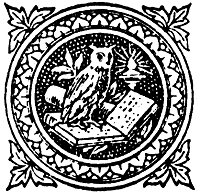ISSN 1750-4953
Marginalia
Home
About Marginalia
Current Issue
Archived Issues
Notes to Contributors
Links to Other Online Journals
Marginalia -- The Website of the MRG
Marginalia
Home
About Marginalia
Current Issue
Archived Issues
Notes to Contributors
Links to Other Online Journals
Marginalia -- The Website of the MRG
Museums and Medieval Material Culture
The old clich� of the museum as a dusty store of objects, jealously guarded by a curator, is long-gone. A recent report commissioned by the Museums Association, explains that:
The museum experience is founded on a triangular relationship: museums bring together collections, knowledge and ideas, and people. If any one of these three facets is missing, then museums lose their essence.
The knowledge and ideas a museum has about its objects are vital to all its other functions, underpinning the exhibitions, education and other public activities that are undertaken. The British Museum review 2002-4 explains:
The British Museum lives on research. New research constantly changes understanding of the collection�s objects and works of art, and the cultures that made them.
But even the British Museum cannot afford to have on-staff specialists researching every area covered by the collection: one of the defining features of museum scholarship is that scholars and students can make a huge contribution to what museums know about their objects. For their part, curators are happy to share information about what they have that relates to a certain time, place or topic, as well as to enable access to objects from the museum�s stores or displays. The modern curator does not just research the objects in his or her care, but encourages and facilitates others� research.
So, if you are working on a PhD about counterfeiting, why not come to the British Museum and ask to see our collection of medieval coins, real and fake? If your project is on religious practice, why not look at the reliquaries in the Victoria and Albert Museum? The medieval world was a material world, and thousands of the objects that were made and used then are preserved in the world�s museums. Looking at the material culture of the Middle Ages can add a new dimension to a thesis based around textual or pictorial evidence. There are many objects about which little is known, so on the way to getting a PhD, you could make a very real contribution to what we know about the objects preserved in museum collections. You�ll find that the doors are open, and there are treasures to be discovered.
Some places to start looking (but remember that seeing a picture is no substitute for seeing the real thing):
http://www.thebritishmuseum.ac.uk/compass
http://www.fitzmuseum.cam.ac.uk/collection/index.htm
http://images.vam.ac.uk
http://www.metmuseum.org/toah/hm/07/eu/hm07eu.htm
http://www.fitzmuseum.cam.ac.uk/collection/index.htm
http://images.vam.ac.uk
http://www.metmuseum.org/toah/hm/07/eu/hm07eu.htm
Catherine Eagleton, British Museum
 Previous |
 Next |

